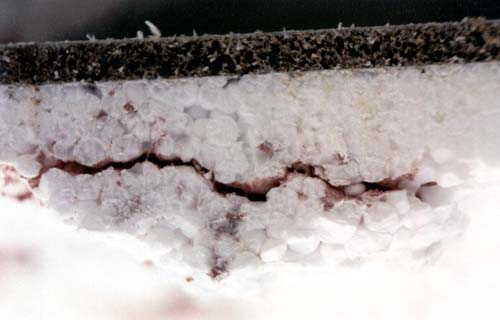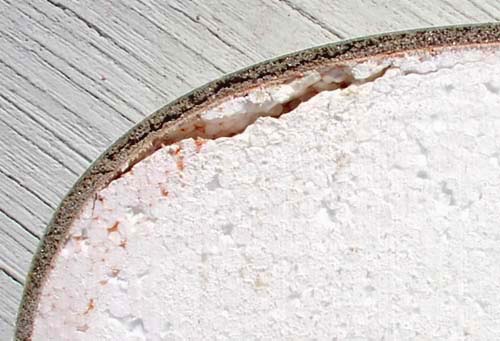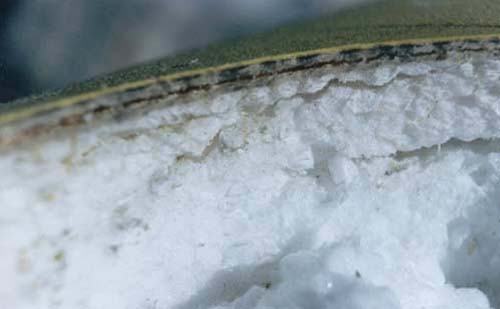|
| |
| Soft Decks
Progression & Symptoms |
|
After
run-ins with hard objects, soft decks are the most common complaint coming
into my shop. Almost without exception, soft decks are the result of
fatigue, i.e. repeated, excessive flexing. Almost without exception, then,
an observant owner could remedy (or cause to be remedied) such a problem, before
it leads to extensive failure or intrusion of water. Almost without
exception, though, soft deck cases come to me leaking profusely :(
The following photos, then, are to aid in the
recognition of the early symptoms, as well as the inevitable progression of
the dreaded soft deck disease, if allowed to go untreated.
|
 |
Early phase of the soft
deck disease: outer fiberglass, Divinycell, and inner glass are intact.
Adhesion between the layers is good. The structural layers flexed repeatedly
and excessively, causing the EPS foam to separate.
When pushed, the area flexes some, but does not make crunchy
sounds.
At this point, injecting Urethane would fix the
consequences of the excessive flexing; adding some Carbon to the deck would
reduce further flexing. |
 |
Another early-stage case,
where the flexing caused the bond between inner glass & Divinycell to fail.
Semi-custom boards tend to fail this way. Cobra-built boards never do.
When pushed, the area bottoms out distinctly, and makes
crunchy sounds.
The fix would be to cut away the delaminated area and
vacuum-bag new Divinycell & outer reinforcements, since injecting resin
would be a total crap-shoot. |
 |
Half a season after the EPS
first failed: the EPS compacted further, causing the Divinycell to flex
beyond its elastic limit, and fail in shear.
When pushed, the area flexes with ease, and makes
crunchy sounds.
At this point, the fix requires a reconstruction of
the crushed EPS core, as well as replacement of inner glass, Divinycell, and outer reinforcements. Getting expensive! |
 |
Non-sandwich deck in the
final throes of the soft deck disease: the EPS is in layers and permanently
compacted, the outer fiberglass separated into layers and devoid of any
stiffness it may once have had. When pushed,
the area feels like a sponge.
If extensive, it is almost not worth fixing at this
point. |
|
return
to Repair Menu |
|